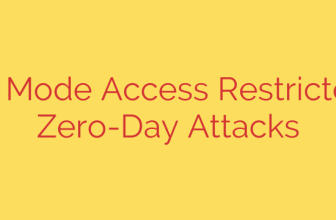
Bridging the AI Infrastructure Gap: How to Deliver On-Demand GPU Power to Your Data Science Teams
The artificial intelligence revolution is in full swing, with organizations across every industry racing to deploy machine learning (ML) models and large language models (LLMs) to gain a competitive edge. However, a critical roadblock is slowing down innovation: the immense complexity and scarcity of AI infrastructure. While data science teams are ready to build, they often face frustratingly long waits for access to the high-performance GPU resources they need, turning what should be a sprint into a multi-month marathon.
This delay isn’t just an inconvenience; it represents a significant loss of opportunity and a major drain on resources. The core challenge lies in bridging the gap between powerful, on-premise hardware and the seamless, on-demand experience that data scientists require to be productive.
The High Cost of an Inefficient AI Workflow
The traditional approach to deploying on-premise AI infrastructure is fraught with challenges. Platform engineering and MLOps teams are tasked with a complex, manual process of integrating high-end servers, NVIDIA GPUs, and sophisticated networking. This process is not only time-consuming but also requires a highly specialized skill set that is in short supply.
The result is a workflow plagued by inefficiency:
- Long Provisioning Times: Data scientists can wait weeks or even months for their development and training environments to be ready.
- Low GPU Utilization: Expensive GPU assets often sit idle while waiting for workloads, leading to a poor return on a massive capital investment.
- Operational Complexity: Managing Kubernetes clusters, security policies, and the underlying hardware for AI workloads is a heavy operational burden that distracts skilled engineers from higher-value tasks.
- Siloed Environments: A lack of standardization leads to inconsistent, difficult-to-manage environments that hinder collaboration and reproducibility.
To truly unlock the potential of AI, organizations need a new model—one that provides the speed and agility of the public cloud with the security, cost-effectiveness, and control of on-premise infrastructure.
The Solution: Building a Private, On-Demand GPU Cloud
The future of enterprise AI lies in creating an internal, self-service platform that abstracts away the underlying complexity. This approach transforms your on-premise hardware into a private GPU cloud, delivering resources to data scientists in minutes, not months. This is achieved by combining a powerful hardware foundation with an intelligent software operations platform.
A Validated Hardware Foundation: It all starts with a robust, pre-integrated hardware stack. This includes powerful compute servers, the latest NVIDIA GPUs, and high-speed networking fabric, all designed and validated to work together seamlessly for demanding AI workloads. By using a pre-configured solution, you eliminate the guesswork and engineering effort required to build a high-performance AI environment from scratch.
A Unified Software Control Plane: Layered on top of the hardware is a sophisticated Kubernetes operations platform. This software layer is the key to unlocking a true cloud-like experience. It automates the entire lifecycle of AI/ML workloads, providing a single pane of glass to manage everything from infrastructure provisioning to application deployment. This platform empowers data scientists with a true self-service experience, allowing them to request and access GPU-powered environments through a simple interface.
Key Benefits of a Unified AI Platform
Adopting a unified hardware and software approach to AI infrastructure delivers transformative benefits that directly address the most common pain points in the ML lifecycle.
Dramatically Accelerated Time-to-Value: By automating infrastructure setup, you can reduce the time to provision AI/ML environments from months to mere hours. This allows data science teams to begin innovating immediately, drastically shortening the development cycle for new models.
Maximized GPU Utilization and ROI: An intelligent software platform enables efficient resource sharing and scheduling. This ensures that expensive GPU assets are constantly in use, maximizing the return on your significant hardware investment and lowering the total cost of ownership.
Streamlined MLOps and Operations: The platform handles the heavy lifting of Kubernetes management, security, and governance. This frees up your platform engineering and MLOps teams to focus on building value-added tools and supporting data scientists, rather than managing low-level infrastructure.
Enterprise-Grade Security and Governance: Centralized control allows you to enforce consistent security policies, manage access with role-based access control (RBAC), and ensure that workloads run in isolated, secure environments. This provides peace of mind without sacrificing agility.
Actionable Security Tips for Your AI Infrastructure
As you build out your on-premise AI capabilities, security must be a top priority. A unified platform simplifies this, but foundational best practices are still essential.
- Implement Zero Trust Principles: Do not automatically trust any user or workload, even inside your network. Require strict verification for every user and device trying to access resources within your AI environment.
- Enforce Granular Role-Based Access Control (RBAC): Ensure data scientists, MLOps engineers, and administrators only have access to the resources and tools they explicitly need for their roles. This minimizes the risk of unauthorized access or accidental changes.
- Automate Policy Enforcement: Use your software platform to codify and automatically enforce security and governance policies across all environments. This ensures consistency and prevents configuration drift that could open up security vulnerabilities.
By moving beyond traditional, siloed approaches, organizations can build a powerful, efficient, and secure AI engine for innovation. The combination of pre-validated hardware and a modern Kubernetes operations platform finally delivers on the promise of an on-premise GPU cloud, empowering your teams to build the future without delay.
Source: https://feedpress.me/link/23532/17184917/unlock-gpu-clouds-with-cisco-ai-pods-and-rafay








